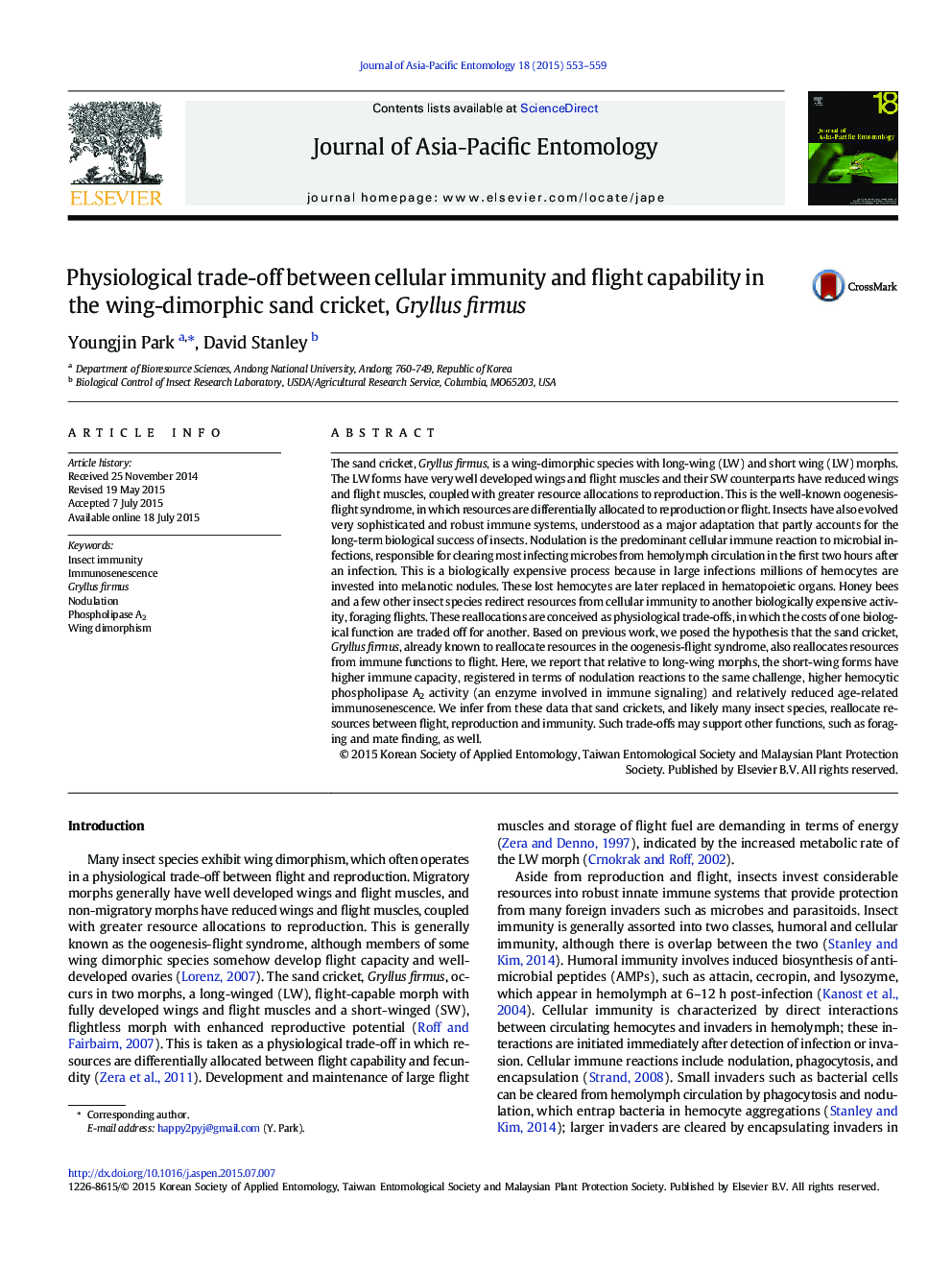| Article ID | Journal | Published Year | Pages | File Type |
|---|---|---|---|---|
| 4524668 | Journal of Asia-Pacific Entomology | 2015 | 7 Pages |
•We test immune functions between short-wing and long-wing morph of G. firmus.•Relative to long-wing morphs, the short-wing forms have higher immune capacity in male adult G. firmus.•Short-wing forms have higher hemocytic phospholipase A2 activity compared with long-wing morphs in male adult G. firmus.•Short-wing forms have higher reduced age-related immunosenescence compared with long-wing morphs in male adult G. firmus.
The sand cricket, Gryllus firmus, is a wing-dimorphic species with long-wing (LW) and short wing (LW) morphs. The LW forms have very well developed wings and flight muscles and their SW counterparts have reduced wings and flight muscles, coupled with greater resource allocations to reproduction. This is the well-known oogenesis-flight syndrome, in which resources are differentially allocated to reproduction or flight. Insects have also evolved very sophisticated and robust immune systems, understood as a major adaptation that partly accounts for the long-term biological success of insects. Nodulation is the predominant cellular immune reaction to microbial infections, responsible for clearing most infecting microbes from hemolymph circulation in the first two hours after an infection. This is a biologically expensive process because in large infections millions of hemocytes are invested into melanotic nodules. These lost hemocytes are later replaced in hematopoietic organs. Honey bees and a few other insect species redirect resources from cellular immunity to another biologically expensive activity, foraging flights. These reallocations are conceived as physiological trade-offs, in which the costs of one biological function are traded off for another. Based on previous work, we posed the hypothesis that the sand cricket, Gryllus firmus, already known to reallocate resources in the oogenesis-flight syndrome, also reallocates resources from immune functions to flight. Here, we report that relative to long-wing morphs, the short-wing forms have higher immune capacity, registered in terms of nodulation reactions to the same challenge, higher hemocytic phospholipase A2 activity (an enzyme involved in immune signaling) and relatively reduced age-related immunosenescence. We infer from these data that sand crickets, and likely many insect species, reallocate resources between flight, reproduction and immunity. Such trade-offs may support other functions, such as foraging and mate finding, as well.
Graphical abstractFigure optionsDownload full-size imageDownload as PowerPoint slide
